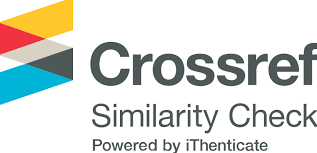KẾT QUÂ NGHIÊN CỨU ĐẶC ĐIỂM HÌNH THÁI CÁC LOÀI CÂY NGẬP MẶN VÙNG VEN BIỂN BẮC BỘ
Từ khóa:
Cây rừng ngập mặn,, biến thái, thích ứng, trụ mầm và bộ rễTóm tắt
Trong rừng tự nhiên và rừng trồng tại vùng ven biển Bắc Bộ, có 6 loài cây
ngập mặn chủ yếu là: Đước vòi (Rhizophora stylosa); Mắm biển (Avicennia
marina); Vẹt dù (Bruguiera gymnorrhiza); Trang (Kandelia abovata); Bần
chua (Sonneratia caseolaris); Sú (Aegiceras corniculatum).
Để tồn tại và phát triển trên đất ngập mặn ven biển, các loài cây ngập mặn
phải có những biến thái thích ứng với điều kiện khắc nghiệt của môi trường
sống là: sóng to, gió lớn, thể nền chưa ổn định, ngập triều, độ mặn... Biểu
hiện nổi bật nhất cho hiện tượng biến thái thích ứng của các loài cây ngập
mặn là biến thái của quả và bộ rễ, đây là 2 đặc trưng liên quan tới việc đảm
bảo khả năng sinh tồn của nòi giống bằng trụ mầm và thích ứng với môi
trường đất bùn, ngập nước bằng bộ rễ. Kết quả nghiên cứu đã xác định,
phân chia sự biến thái thích ứng hình thái và sinh thái đặc trưng về giống và
bộ rễ của 6 loài cây ngập mặn ven biển Bắc Bộ thành 4 nhóm loài.
Kết quả nghiên cứu này là tài liệu tham khảo và sử dụng để lựa chọn các
loài cây trồng rừng phù hợp với các mục tiêu trồng rừng ngập mặn ven biển
khác nhau, gắn với việc xây dựng nguồn giống có chất lượng (rừng giống
chuyển hóa, rừng giống, vườn giống), góp phần nâng cao hiệu quả trong
quản lý và phát triển bền vững đối tượng rừng đặc thù này.
Tài liệu tham khảo
1. Nguyễn Ngọc Bình 1999. Trồng rừng ngập mặn. Nhà xuất bản Nông nghiệp, Hà Nội.
2. Phan Nguyên Hồng, 1984. Kết quả nghiên cứu hệ thực vật rừng ngập mặn Việt Nam.
3. Nguyễn Hoằng Trí, 1987. Sinh thái học rừng ngập mặn. Nhà xuất bản Hà Nội.
4. Báo cáo kết quả điều tra, khảo sát ngoại nghiệp dự án: Phát triển giống một số loài cây phục vụ trồng rừng vùng cửa sông, ven biển các tỉnh miền Bắc (năm 2013 - 2014). Viện Nghiên cứu Sinh thái và Môi trường rừng.












